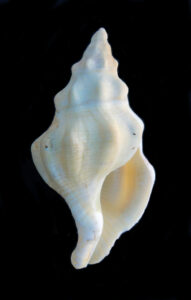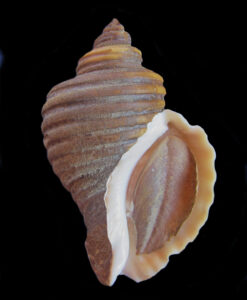Whelks and False Tritons are a large group of shells belonging to the Buccinidae Family. These shells are very diverse in shape. Most consist of few whorls, a large body whorl, and a short siphonal canal. These shells are strongly spiraled, with each whorl readily identifiable. The sutures (where individual whorls join together) tend to be deep. The exterior surface may be sculpted with lengthwise, or spiral ridges, but most species will not display knobs, spines, or varices. These shells have thin, ovate, operculum. The temperate and polar species tend to have subdued coloration. Tropical species are generally more colorful. These shells have large apertures. Many species have a flared outer lip, which they use to pry open bivalves.
Whelks and False Tritons are generally found on soft substrates. They are opportunistic carnivores. They prey on mollusks, crustaceans, and ascidians (worms). They also eat carrion. They locate food by use of chemoreceptors. They are found in tropical, temperate, and polar seas, worldwide. Most species in the Family are found in cold waters. There are currently many revisions being made in this Family, with species regularly being moved in or out of the Family. Currently there are somewhere between 1200 and 1800 species in the Family. Five species are found along the Baja Peninsula.

